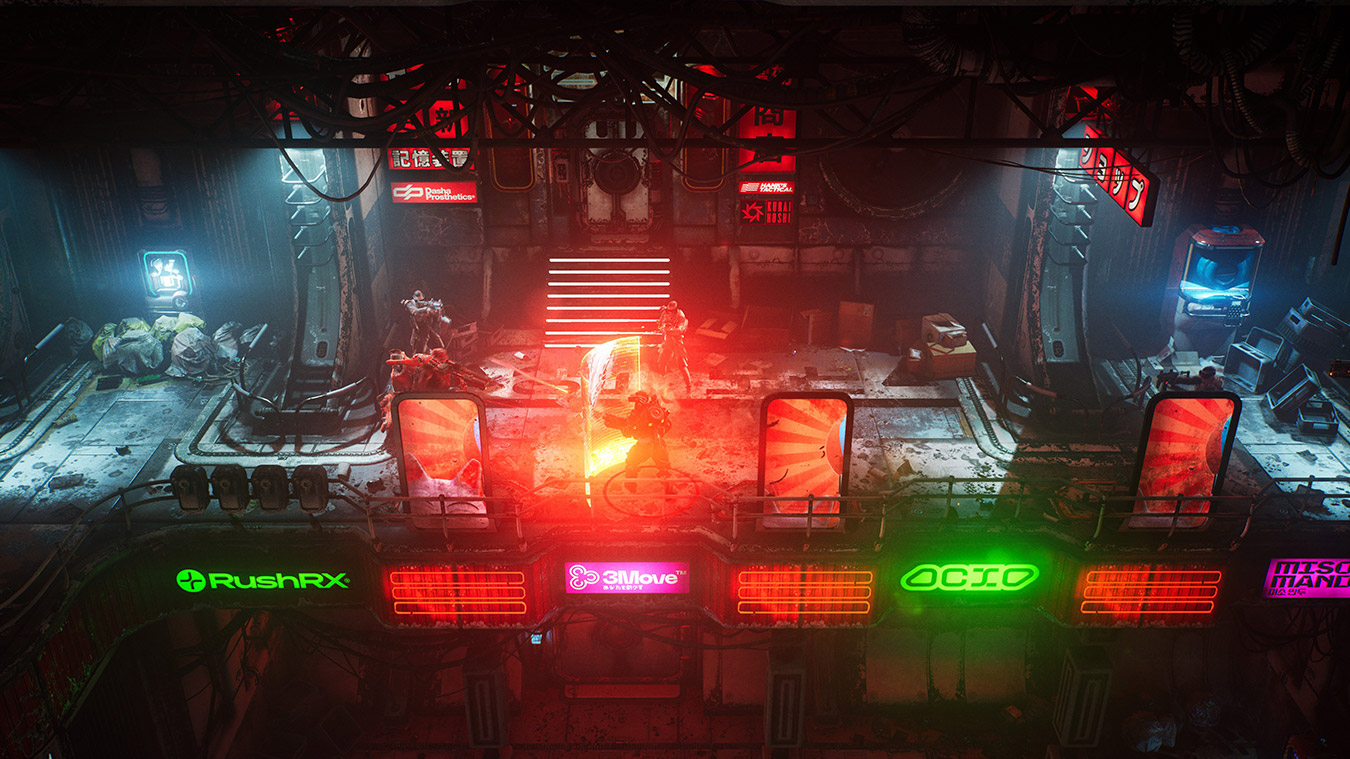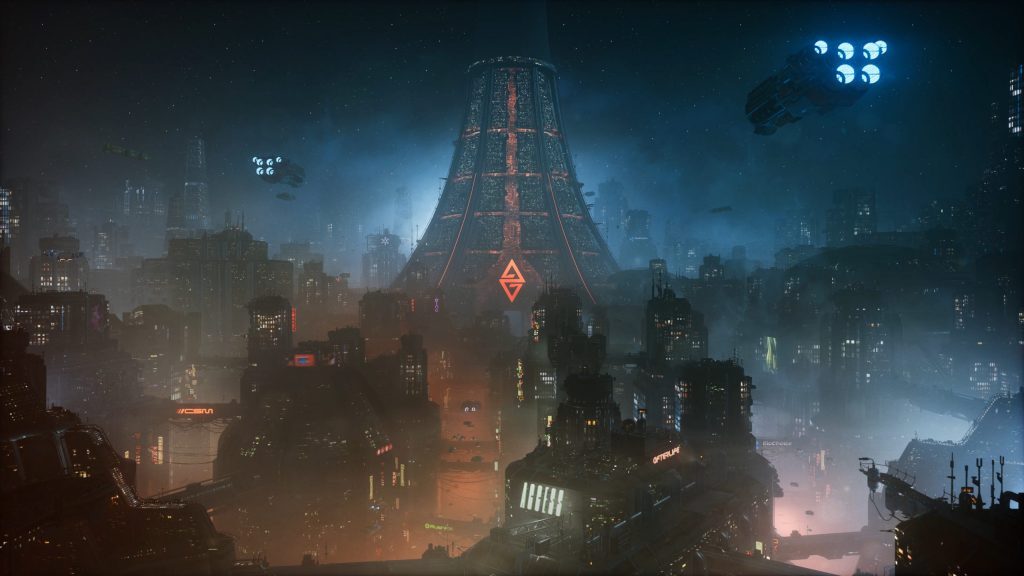While some aspects of the story and characters let it down slightly, The Ascent’s combat and presentation carry it through. The setting is gorgeous, the music is fantastic, and the gameplay is tight, satisfying, and customisable enough to keep it fresh and exhilarating for hours on end.
-
Presentation
-
Story
-
Gameplay
Let’s get something out of the way right now. Yes, The Ascent is a cyberpunk game. No, it’s not Cyberpunk 207. Everyone clear? Good.
The Ascent is a cyberpunk-themed, top-down, cover-based shooter created by fledgling studio Neon Giant, a twelve-person team of video game developer vets who’ve worked on titles like The Outer Worlds, Wolfenstein and Bulletstorm. So these peeps know their games, even if the point-of-view change is a little odd.
What’s it all about?

The voice acting for most of the main cast is grade A, and the same goes for their characters. Some are a bit on the flat side, but the well-rounded personalities of others make up for it. nogHead, a netSage, was a particular standout for me. Unfortunately, the least interesting character in the game is… you. You play a mute hero, which can work (see the immensely popular Zelda games) but doesn’t quite hit the mark here. It feels like you get talked at quite a bit, with minimal input of your own, and while a silent protagonist is meant to leave room for the player to imprint on, your journal is written from what appears to be a preexisting personality, making it hard to relate to yourself. It’s not a deal breaker, but worth mentioning.
Going up
Veles is a visual masterpiece that pairs brutal concrete and metal with an almost unreasonable amount of shimmering neon, and that goes for the character designs too. While most areas seem made of similar DNA, they still vary greatly, with the top-down view offering glimpses into the endless depths of the arcology below or rows and rows of gritty residential areas spanning out to the horizon. Walking from area to area is like wandering through a panorama.
It’s through walking around that you experience the world. See, the main story gives you a taste of what Veles is like. But The Ascent really lets you live in it. You’ll hear tired workers complaining about their shift as you shoulder through crowded industrial sectors or listen to stone-faced corporate security hires describing some upper management conspiracy. And more than anything you’ll get the sense of unrest and uncertainty from the residents in the light of their way of life being imperilled by the loss of the Ascent Group. If you’re a total lore jockey then you can dive into the codex to lap up every detail of every place, person and bit of jargon you meet in Veles, but simply existing in it will be enough for most. Oh, and the music is phenomenal.
“Ballistic persuasion initiated.”
As mentioned, The Ascent is a top-down shooter with cover at its core. Like most top-downs, you run around using the arrow keys/right stick and aim your weapons with the mouse/left stick. But the cover aspect introduces a whole new dimension, literally, by adding a pseudo-Z axis. Your character and your enemies can crouch to duck behind cover, and you can even raise your weapon to blind fire over the top of it, safe from harm. You can also raise your weapon from hip firing to eye-level while standing up. Some enemies can only be hit by a hip fired weapon, others will only take damage from a raised one. You can also raise your weapon to fire at enemies on a staircase or platform, giving you an advantage since they can’t lower their own enough to hit you. It introduces a new (or new to me at least) element to top-down shooting that takes a bit to get used to, but becomes second nature an hour or so in.
There’s a fun range of weapons, each unique enough, from assault rifles, to shotguns, to snipers, to semi-automatic mini rocket launchers, and you can switch them up at any point to fit your play style. Just remember to level them for harder missions. They can be upgraded using materials found throughout the world.
Weaving all of your abilities together turns combat into an immensely gratifying audio-visual experience. Guns sound and feel satisfying, powers light up the screen in gorgeous technicolour, and enemies melt into pools of neon mush dropping gear, health packs, and cash for you to loot. What’s more is that, while they’re not as sophisticated as human players, enemy AI makes use of cover and the pseudo-Z axis just like you do, and come with their own sets of tacticals and augmentations. Boss fights expand even further on this and are a joy to conquer.
My one criticism of the combat is that sometimes it feels slightly unbalanced, numbers-wise. See, The Ascent can be played solo or with up to three extra friends co-op. I feel that particularly the higher level areas and boss fights are balanced for co-op teams rather than solo players. They’re not impossible, but they feel a bit more like a war of attrition than they should. Otherwise, blasting through enemies is a delight, which is great since it is most of what you do.
The Ascent: Verdict
The Ascent was reviewed on PC using a review code provided by Neon Giant. The Ascent launches 29 July on Xbox and PC, and is available on Xbox Game Pass.
